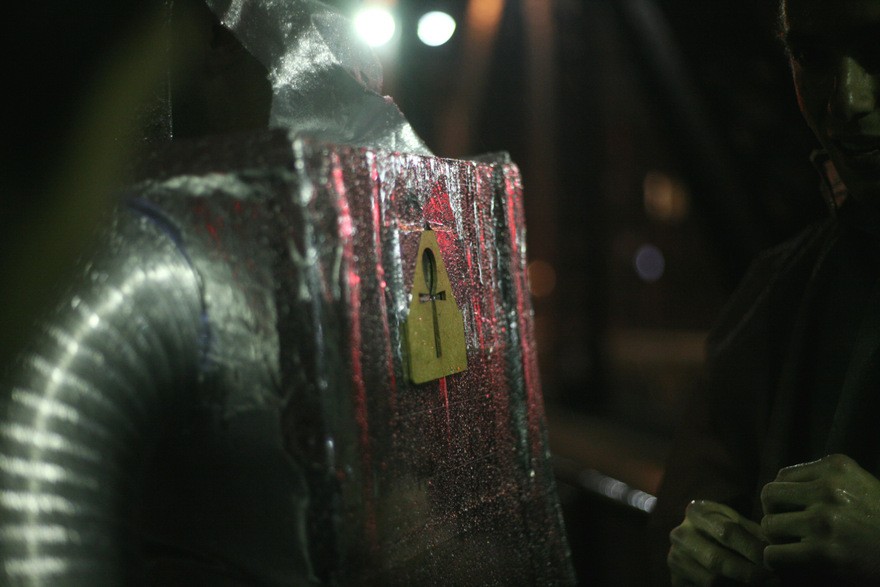This article is part of a collaboration with iQ by Intel.
Gabe Smedresman always wanted to design games. He started in the fourth grade with QBasic, Klik and Play, and DarkBasic, an obscure tool which introduced him to 3D graphics, but in the two days following our interview, he’d go on to test two of his new games that don’t rely on any software.
He’ll meet with a group of friends and volunteers at Golden Gate Park in San Francisco for a test run of The Most Dangerous Game (based on the short story), which he will eventually run for a private company as a team-building exercise. The next day, his players will run through the streets of San Francisco’s Mission district in a kind of scavenger hunt in celebration of Shavuot, a Jewish holiday.
If there’s one consistent development environment in his work these days, it’s the real world, real people, specifically in the city of San Francisco.
A great example of how Smedresman’s work takes advantage of San Francisco is Castro Catastrophe. The “historical narrative game” is inspired by the history of Harvey Milk, the first out gay man elected to public office in California; it mixes participatory theater, role-playing, and an adventure game. Players walked around Castro Street and several local stores, earning the endorsements of actors playing the roles of Milk’s friends and competitors, who also provided clues on where to proceed.
Smedresman says games are a unique medium. They won’t teach you about a historical situation and all the people involved more than you would by reading a decent book about it, but the difference is you learn experientially.
“It potentially has the ability to create a deep sense of empathy,” he said. “Games have that power in general by putting you in the place of whomever it is you’re trying to evoke this sense of instead of just describing it. There’s a lot of suspension of disbelief involved and a lot of imagination as well, but that’s great.”

Smedresman’s interests shifted from videogames to street games when he was an architecture undergraduate in Yale. It was during what he called the peak and downfall of the “Alternate Reality Game” (his quotes) as marketing. Halo’s viral marketing campaign designed by Jane McGonigal, I Love Bees, was huge at the time, and Smedresman was particularly interested in a similar campaign for Audi called Art of the Heist.
He said the idea that you can embed a game in the real world, set up strange events, get players to steal an Audi, find a USB key, call payphones, etc, completely blew his mind. It ran wild with the possibilities of games that blended fiction into the real world and forge new memories of physical spaces by playing in them. “That idea was burned into me from the ARG world and has never left,” Smedresman said. “All of my work, or much of it, is about that, enriching your relationship with places and people.”
Eventually, big companies abandoned ARGs as product promotions, and they took the big budgets with them. Today, one of the biggest challenges facing Smedresman and similar developers who meet for his Adventure Design Group is how to fund them.
One of his most successful projects that he made with Catherine Herdlick, Logan’s Run (like the movie), had a budget of $6,000, $2,000 of which went toward permits.
“We found a perfect venue right away, the Yerba Buena Children’s Garden, and we just had to run it there.” The plan was to run the game in “stealth mode,” but Yerba Buena found the Facebook event page and demanded a permit. There were also costs associated with building custom tech for the game (recreating the movie’s life clocks), and, more importantly, giving people something back for their work.
“A lot of times people who work on these games volunteer, and it was important to us pay some of the people involved,” Smedresman said. “I knew right from the bat that we were going to charge for it because a huge part of it was, yes, we can we run a big event and have it be financially viable.“
Players who bought tickets for $20 played as Runners, and players who bought tickets for $50 played as Sandmen, and had a few bonus features and storylines to participate in. There were also some “pay what you can” tickets. Players find these games through social media, or funcheap.com, which collects fun, cheap activities for people to do on weekends. 250 people bought tickets for the game and 200 showed up. “And it was raining,” Smedresman said proudly. It was just enough to cover the costs.

Much like smaller videogame developers before Steam and other platforms, street games are currently trying to find a workable business model. Their added challenge is explaining what it is they even do, and how to present that to the public. How do you sell your friends or the press on one of Smedresman’s games? What do you even call it?
Games like Logan’s Run and Real Escape Room prove that there is progress, that there’s a future for the art form. Smedresman thinks even the success of Sleep No More, which we don’t think of as a game, opens people up to the possibility of an immersive world you can buy a ticket to. That’s a huge deal, because the more people open up to this form, the more it could do.
“I want to push the idea of making meaningful work that demonstrates that this immersive interactive world that we’re building, that’s not in the screen, which just like the best in music and literature, enriches your approach to life,” Smedresman said. “That’s possible. We can do it. We’re not nearly there yet, but that’s definitely what I’m shooting for.”
All images via Anna Vignet.
